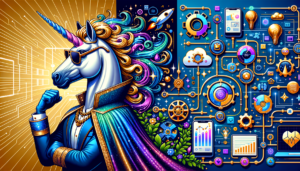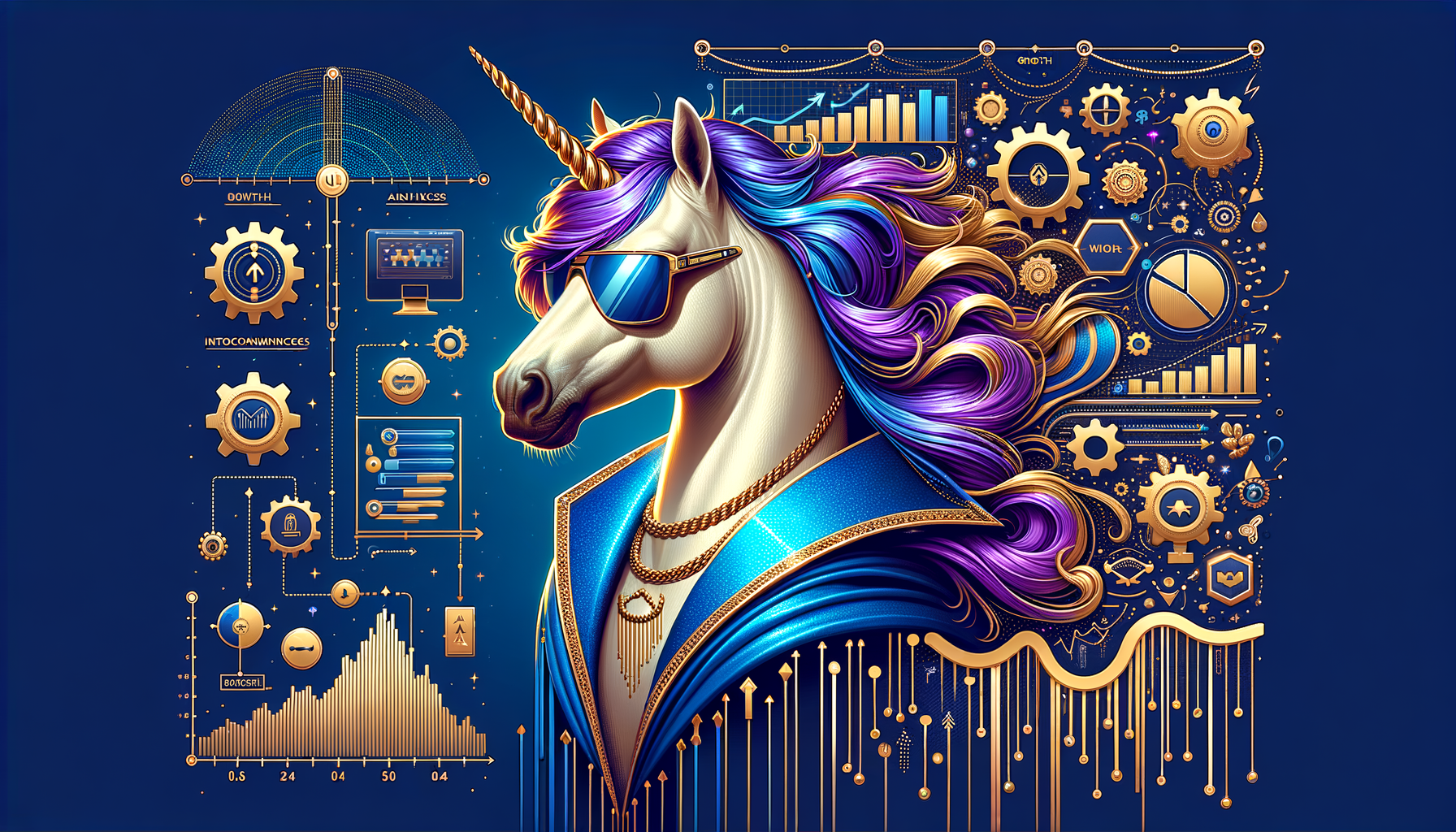The increasing integration of technology into our everyday lives has sparked a lot of discussion around the concepts of automation and artificial intelligence (AI). As businesses and individuals continue to explore the potential of these technologies, many are left wondering: Is automation a form of AI?
Let’s unpack these concepts, examine their relationship, explore their individual roles, and delve into the nuances that differentiate them.
Introduction: is Automation a Form of AI?
In our rapidly evolving tech landscape, the definitions of automation and artificial intelligence (AI) have become essential points of discussion. Automation refers to the use of technology to perform tasks without human intervention, typically aimed at increasing efficiency and consistency. Think of how your favorite online store automatically processes your orders or how factories use machines to assemble products.
On the other hand, artificial intelligence is all about computers simulating human cognitive functions—learning from data, problem-solving, and making decisions. It ranges from basic algorithms to sophisticated systems capable of understanding language and recognizing patterns.

The question, “Is automation a form of AI?” is not just academic; it taps into our perceptions of these technologies and their real-world implications. Many people think that automation is automated intelligence, but that glosses over some key differences. This article aims to clarify those distinctions while exploring how automation and AI not only coexist but also enhance each other in myriad ways. Understanding this relationship has implications for both individuals and businesses, influencing how we adapt to an increasingly automated future.
Understanding Automation vs. AI
When diving into the world of tech, it can get confusing fast. We often hear the terms “automation” and “artificial intelligence” tossed around, sometimes as if they mean the same thing. But they don’t. Let’s break down what each one really is and why they matter.
What is Automation?
At its core, automation refers to the use of technology to perform tasks with minimal human intervention. Think about the machinery in a factory that assembles products without needing a worker to manually put every piece together—that’s automation in action. There are two main types: process automation, which focuses on entire workflows (like payroll systems), and task automation, which zeroes in on specific, repetitive tasks (like data entry). This not only speeds things up but also reduces errors, freeing up humans to tackle more complex challenges.
What is Artificial Intelligence?
On the other hand, artificial intelligence is a bit more complex. It involves creating systems that can perform tasks requiring human-like intelligence. This includes things like learning, reasoning, problem-solving, and even understanding languages. Under this umbrella, we find subfields like machine learning—where computers learn from data—and natural language processing—where they understand and respond to human language. It’s all about making machines smarter, so they can do more than just follow a set of instructions.
Automation vs AI: Key Differences
So, what really sets them apart? Is Automation a Form of AI? For starters, decision-making is a big one. Automation generally sticks to predetermined rules, meaning it’s great for the routine stuff but can’t adapt to new situations. AI, however, has the ability to learn from new data and adapt its responses, making it far more flexible.
Complexity is another area where they differ. While basic automation might manage a simple task like sorting files based on names, AI can analyze data trends and suggest business strategies. And adaptability? Well, automation doesn’t change unless you tweak the code or configuration, but AI systems can reprogram themselves based on what they’ve learned.

In summary, while both automation and AI play significant roles in improving how we work and live, they each have distinct characteristics and abilities. But yes, in most cases Automation is a Form of AI. Understanding these differences is key as we explore how they can work together effectively.
The Intersection of AI and Automation
When you think about automation, you might picture robots buzzing around a factory or software tools handling mundane tasks. But here’s where it gets interesting: artificial intelligence (AI) takes automation to a whole new level. Think of AI as the brain behind the brawn, adding a layer of intelligence to automated processes. So, Automation a Form of AI? Not exactly, but they compliment eachother.
How AI Enhances Automation
AI supercharges automation by giving it the ability to learn, adapt, and make decisions. Imagine a chatbot that doesn’t just spit out pre-written responses but can understand the context of a conversation, learning from previous interactions to improve over time. That’s AI in action. Consider predictive analytics in supply chain management, where AI analyzes data patterns to forecast demand accurately and adjust ordering processes in real-time. It’s this kind of sharp decision-making that separates smart automation from the rest.
Automation Technology: The Backbone of AI
At the core of AI are underlying automation technologies that allow data to be gathered, processed, and utilized. For instance, think of how automated systems collect vast amounts of data that AI algorithms analyze to recognize trends or anomalies. Without these automation technologies, AI wouldn’t have the raw material it needs to learn and improve.
In a nutshell, automation creates the framework, while AI puts a brain inside it, making the entire system smarter and more efficient. As businesses aim for greater productivity, marrying automation with AI could become not just a trend, but a necessity.
Real-World Applications of Automation and AI
Case Studies of AI in Automation
Let’s dive into some real-world scenarios where artificial intelligence and automation are not just buzzwords but are actively making waves across various industries. Let’s uncover our question is Automation a Form of AI, here?
Customer Service: One of the most visible use cases is in customer service, where chatbots have taken center stage. These AI-powered bots handle inquiries 24/7, providing quick responses and freeing up human agents to tackle more complex issues. For instance, companies like Zappos use AI-driven chat tools to engage with customers effectively, leading to faster resolutions and happier clients.
Manufacturing: In the manufacturing sector, robotic process automation is revolutionizing the assembly line. Factories are implementing intelligent robots that can adapt to new tasks without extensive reprogramming. Take Tesla, for example. Their production lines use AI to optimize workflow, reduce waste, and ensure quality control, all while enhancing safety for human workers.
Supply Chain Management: AI is also reshaping supply chains with predictive analytics. Companies like Amazon utilize AI algorithms to forecast demand, optimize inventory levels, and streamline logistics. This not only speeds up processes but also significantly cuts costs, making their operations more agile.
Industries Benefiting from Automation and AI
Several sectors are getting a major boost from the combination of automation and AI.
Healthcare: Hospitals are using AI for predictive analysis in patient care, improving diagnostics, and streamlining administrative tasks. Automation is helping with appointment scheduling and patient follow-ups, ensuring that healthcare professionals can focus on delivering better care.
Finance: The finance industry is reaping benefits too. Automated trading systems powered by AI analyze market trends at lightning speed, making trades far more efficient than human brokers could. Additionally, fraud detection systems use machine learning to identify suspicious patterns in real-time, safeguarding financial transactions.
Retail: In the retail space, businesses are integrating AI-driven analytics for inventory management and personalized marketing strategies. Automation of checkout processes using AI, like self-checkout kiosks, enhances customer experience while reducing wait times.
In these examples, we see that the integration of AI and automation is not just a trend; it’s becoming essential for sectors looking to improve efficiency, reduce costs, and enhance customer satisfaction.
Advantages and Disadvantages of Automation and AI
Benefits of Implementing Automation
Automation has its fair share of perks. First up, increased efficiency. By handling repetitive tasks, automation frees up employees to focus on more creative and strategic work. That means businesses can operate faster and allocate resources more cleverly. Cost reduction is another win—machines don’t take sick days or ask for raises.
Then there’s the human error factor. Automation can cut mistakes down to a minimum, ensuring a level of reliability that humans can’t always guarantee. As for jobs? While some roles may vanish, new ones will emerge, reshaping the workforce rather than pushing everyone out the door.
Limitations of Automation without AI
But let’s not gloss over the downsides. Traditional automation relies on set rules. If something unexpected happens, these systems can falter. Here’s where AI shines. It brings adaptability to the table, learning from the environment and adjusting on the fly. Without AI, you’re stuck in a rigid framework that can’t handle complexities or changes in real-time. This can lead to hiccups that are more costly than if you had just invested in AI from the start.
Ethical Considerations
Now, let’s get real for a second. With any tech advancement comes ethical considerations that we can’t ignore. Automation and AI raise questions about accountability. Who’s responsible when an automated system goes haywire? And let’s talk biases. AI systems can perpetuate existing inequalities if they’re trained on flawed data. Plus, while automation can eat into jobs, it can also create new opportunities—though navigating this balance is tricky. As we move ahead, we’ll need to keep asking ourselves: how do we reap the benefits without running over our workforce and societal values?
Future Trends in Automation and AI
The Evolving Landscape
The future of automation and AI is a fast-moving target. As each technology grows, so does their interplay. We’re moving toward a world where automation isn’t just about doing repetitive tasks faster; it’s about smarter systems that learn and adapt over time. Innovations like hyperautomation are on the rise, merging automation with AI to create a seamless flow of operations. Picture this: software that doesn’t just automate your emails but learns your preferences, predicting what you need before you even ask for it. That’s the power of blending these technologies.
Another exciting development is intelligent automation, which combines robotic process automation (RPA) with cognitive technologies. Think of it as adding a brain to a machine’s brawn. This trend can lead to more sophisticated processes, where what used to require human oversight becomes fully autonomous, yet still delivers a level of understanding that ensures context and nuance.
Preparing for a Future with Combined Technologies
So, what does this mean for businesses and workers? First off, adaptability is key. Companies need to embrace a mindset of agility. As automation and AI technologies evolve, the roles and skills required will shift. Workers should focus on continuous learning—not just in tech skills but also in critical thinking and emotional intelligence. These human skills will complement the machines, leading to a more synergistic environment.
Industries will also have to innovate alongside technology. Successful organizations will harness data analytics to refine their operations and enhance decision-making. It’s not enough to adopt new tools; businesses must also be willing to redefine their processes and cultivate a culture that embraces change.
In short, as automation and AI continue to evolve, the future looks promising for those ready to adapt, learn, and innovate. The relationship between these technologies doesn’t have to be adversarial. Instead, businesses and individuals can work together with machines to create a smarter, more efficient world.
Automation can leverage AI
In wrapping up our exploration of automation and artificial intelligence, it’s clear that while they share a common ground, they’re not simply two sides of the same coin. Automation is fundamentally about streamlining processes—taking repetitive tasks off human hands to boost efficiency. It thrives when it comes to routine, predictable jobs. On the other hand, AI brings cognitive abilities to the table, allowing machines to learn, adapt, and make decisions like humans do.
Understanding the distinction matters, especially as businesses navigate a landscape increasingly focused on integration. When paired effectively, automation can leverage AI to become more than just a sequence of steps; it can respond, learn, and evolve, creating a potent blend that drives innovation.
As we look to the future, the convergence of these technologies will likely redefine industries and job roles, offering new opportunities while posing unique challenges. Embracing both automation and AI isn’t just a push toward efficiency; it’s a step toward intelligent solutions that enhance how we work and live.
Additional Resources
If you want to dive deeper into the fascinating world of automation and AI, here are some great resources to check out. These links offer a mix of articles, case studies, and expert opinions that can help you navigate the complexities of these technologies.
- StakezLabs Resources
For a more technical understanding of automation technologies, Stakez Labs is an Agency that gives businesses rich insights, tutorials, and implementations with an eye for the latest trends and innovations. Their resources are also geared towards those interested in the nitty-gritty of how these systems work and their impact across various industries. Check them out here. - Harvard Business Review Articles
Harvard Business Review features a range of articles discussing the implications of automation and AI in the workplace, including strategies for implementation and the ethical considerations surrounding their use. - MIT Technology Review
Stay updated with recent developments in AI and automation technologies by visiting MIT Technology Review. They offer in-depth analyses and expert forecasts that are valuable for anyone looking to understand future trends. - Podcasts
Listen to tech podcasts that focus on automation and AI, such as “AI in Business” and “The Automation Podcast.” These shows often feature interviews with industry leaders who share their insights and experiences.
By tapping into these resources, you’ll not only broaden your knowledge but also gain a better perspective on how automation and AI are shaping our future. Whether you’re a business leader, a tech enthusiast, or simply curious about these technologies, there’s a wealth of information waiting for you.
And coming back to the question: Is automation a form of AI? In summary, automation doesn’t always use AI, but AI is often used to create more intelligent, flexible, and adaptive automation systems.


Leave a Reply